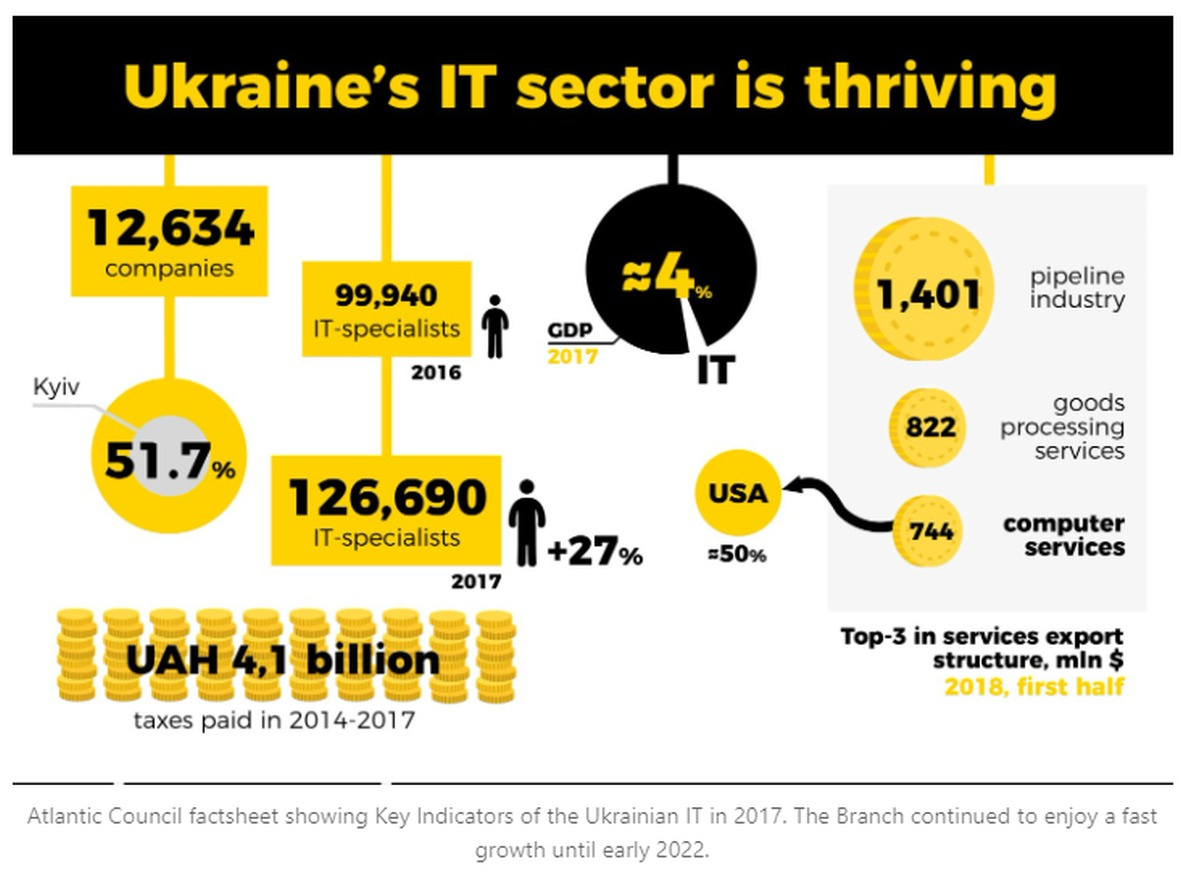Of Tech Industry and Air Defence: Zvook and Pokrova
Adrien Fontanellaz is providing insights into the Ukrainian IT-Sector and its Impact on the War in Ukraine
Hello everybody!
Nope, I would never say I’m the cleverest guy around. On the contrary! I do happen to work in company of some very clever and well-informed people, though. Or at least I know whom to ask for what kind of information.
One of people I love working with is Adrien Fontanellaz, from Switzerland. We’re working together for about 10 years meanwhile, and have authored a number of books about contemporary military history. Sure, most of what we have researched and written so far was related to certain ‘relatively well-known wars in Africa’ (see: Angola, Eritrea, Ethiopia, Rwanda, Uganda, to name a few). It’s ‘only’ the last two years that we began working on topics related to the war in Ukraine, too. However, what I find particularly interesting about Adrien’s approach to such topics is that he is always finding a way to approach them from an unusual perspective. See: to work with help of local, first-hand sources. More than often, the results are offering entirely new insights. So also in this case.
But, let me not waste your time with more of introduction: simply read the following. I’ve found it exceptionally interesting. Indeed: ‘eye-opening’.
***
Since the mid-90’s, Ukraine developed a large-scale IT industry, which includes several major hubs located in Kyiv, Lviv, Kharkiv and Dnipro. By 2020, this generated 4 % of the GDP. By early 2022, the sector included roughly 5,000 companies, including a large number of start-ups. An estimated 300’000 people were working in the branch, whilst 20,000 new specialists graduated from the University every year.
Noticeably, one of the consequence of the unceasing – and sometimes massive – Russian cyberattacks which targeted Ukraine since at least 2013 was to push the Ukrainians into developing a strong and well-experienced cybersecurity sector, composed of both public and private actors.

IT at War
Indeed, Ukraine’s booming IT industry became involved in the war effort early on. Since 2014, private or semi-private initiatives gave birth to military system such as Kropyva (Nettle), a battle management system which proved crucial into giving an edge to the Ukrainian artillery. Furthermore, and before the full-scale invasion of February 2022, the Center for Innovation and Development of Defence Technologies of the Ministry of Defence of Ukraine had begun to develop the Delta situational awareness platform, which is basically an online platform through which intelligence gathered by various means can be shared, from HUMINT to SIGINT or air reconnaissance, and presumably data provided by the Palantir’s MetaConstellation system, which is known to be operated by the Ukrainians. On 4 February 2023, Kyiv announced the induction of Delta in the Ukrainian defence forces, even though one can easily imagine that the platform had already been submitted to large-scale testing, and thus diffusion, before that. Interestingly, Delta was designed from the onset to be NATO-interoperable, and by summer 2023, had proved itself able to interact with 15 different systems used by various NATO countries, as well as F-16 aircraft trough Link 16 protocol.

Beleaguered airspace
One crucial facet, or front, of the full-scale war is the unceasing strike campaign conducted by Russia in the depth of the Ukrainian airspace. At the beginning, the former targeted primarily Ukrainian air defences as well as command and control infrastructures. In March 2022, the focus switched on governmental and telecommunication infrastructures, as well as the defence industry, and then in May against refineries and the railway network. Later on, the Russians heavily stroke Odessa to disrupt Ukrainian grain exports. On 10 October 2022, Moscow initiated a protracted campaign targeting the Ukrainian energy sector, with an emphasis on the power grid, which lasted until March 2023. Whilst it inflicted heavy damages to the later and disrupted the daily life of millions of civilians, it ultimately failed to collapse it. The airstrikes continued unabated thereafter, striking countless places around the country, with an emphasis on the defence industry, the PSU (Ukrainian Air Force) air bases and air defences, and Kyiv, whilst a second round of intensive air attacks against Odessa took place during the Summer of 2023. On 31 December 2023, Lt. Gen. Mykola Oleshchuk, head of the PSU, gave on his Telegram account an insight into the sheer scale of Russian air attacks by revealing that his service had detected a total of 2,348 cruise missiles and 3,940 attack drones launched against the country since the first day of the war, to which one can add at least hundreds of ballistic and aeroballistics missiles.
(Note the typical sound of a Shahed-136/Geran 2 attack drone, often compared to the one of a motorbike or a lawnmower, hence their nickname of “flying moped”.)
Zvook
One of the main difficulties to intercept cruise missiles and attack drones lies in their ingress at low or very low altitude, where it is the most difficult to establish a complete radar coverage because the earth curvature or simply the heights are drastically reducing the range of any ground radar. Unsurprisingly, and whilst the Ukrainians has a pretty good overall radar picture of their airspace at medium to low altitudes, there is numerous gaps in their coverage of the very low altitudes. Because of the country seize, it would be unaffordable for Kyiv to “plug” all of the resulting gaps – because countless radar stations would be needed to do so.
Of course, the Russians are constantly mapping the evolving Ukrainian radar coverage (thanks to a large number of mobile radar stations) - to locate these gaps and use these to hide the ingress of their own cruise missiles and drones as much as they can.
In early 2023, the Ukrainian press unveiled the existence of Zvook (sound), a system which associates age-old technologies with cutting-edge ones, such as Machine Learning. Born from a cooperation between a Territorial Defence Brigade and several relatively small IT firms, Zvook consists of a network of acoustic sensors placed on mobile communication towers and other fitting places throughout Ukraine. These sensors are connected to a series of processing centres which are using Machine Learning to sort out from ambient noise the sounds emitted by Russian missiles and drones whilst flying within range of the listening station, and continue to track them whilst they are overflying other ones. Dmytro Believtsov, CTO and co-founder of Respeecher, one of the companies involved in the project, explained in early 2023 why Machine Learning technologies were at the core of the project:
“Zvook is based on machine learning, which enables the system to detect enemy air targets. ML technology revolutionized image processing in 2006, and the machines acquired almost human-like data analytics capabilities. However, machine learning can process a much larger amount of information than a human. It is crucial that neural networks not only carry out the data analysis but also learn from errors and enhance operation. Historically, a neural network dealt with object detection in images. Sound can be identified with an image which will be recognized by the system. This is how the audio direction began to develop. Regarding the Zvook system, we have an audio stream which contains a large number of certain sound objects existing in time, not space, such as wind, road noise, little flies, engineers’ voices, cows’ mooing, chainsaws cutting wood, etc. These sounds account for 99.9% of the data, which allows us to separate a very small percentage (0.1%) of what we are primarily interested in, i.e. the sounds of enemy air targets. The algorithm is intended to identify the target among many other objects and notify a station user. We constantly train the network and provide it with the necessary data to achieve the desired result. What the ML algorithm requires is access to the right amount of accurate data.”
The data are than transmitted in real time to the PSU Integrated Air Defence System (IADS), which can use these to react accordingly, either by activating air defence systems, direct mobile fire groups or scramble MiG-29 or Su-27 fighter jets to intercept.
(Note the - very different - sound of a cruise missile.)
Overall, Zvook can be compared to a gigantic and decentralised passive sonar system. However, the difficulties that had to be overcome before to have the system “up and running” on a large scale cannot be overemphasized. It took months to “teach” the AI to learn to differentiate the sounds emitted by missile and drones from their background, and this without mentioning the intricacies related the integration of the data generated by an entirely new detection system into an already complex IADS.
Spoofing
Furthermore, the Ukrainian industry managed to develop a system able to interfere with the operations of the Shahed-136/Geran-2 attack drones. Named Pokrova after the Feast of the Protection, which celebrates an apparition of the Virgin Mary in the course of which she threw her mantle over a church to protect it from a party of Ottoman soldiers, the system consists of a network of emitters which covers the national territory.

Because most Russian GLONASS or GPS guided ammunitions such as the Shahed/Geran, the various models of cruise missiles and even the UMPK bomb guidance kits are equipped with the Kometa-M system which protects them from jamming, Pokrova uses spoofing, that is the transmission of false signals with slightly wrong coordinates to the UAV’s navigation systems until they are set off-course away from their intended target. General Valerii Zaluzhnyi described Pokrova in the following fashion in his November 2023’essay; “the capabilities to counter enemy high-precision weapons (guided missiles, UAVs) are being increased by deploying the "Pokrova" nationwide EW system with the possibility of replacing the satellite radio navigation field ("spoofing"), suppressing satellite radio navigation along the entire line of contact and in most parts of Ukraine”.
(Another Geran-2 which might have fallen victim to Pokrova)
Whilst the overall efficiency of the system remains unknown, the PSU claimed on several occasions since mid-January 2024 to have neutralized Geran 2 drones with electronic warfare means. Pokrova is said to be much less-efficient against cruise missiles because these have not only more sophisticated Inertial Navigation Systems but can also use terrain-mapping as a complement or an alternative to satellite-guidance. In any case, Prokrova configuration and capabilities remains hazy at best, for obvious operational security reasons, but also because the Ukrainians developed and inducted other similar systems, as hinted by MP Oleksandr Fediyenko “Ukraine has a modern development, and not just one, that can interfere with the systems of such vehicles using electronic warfare (EW). These are not one, not two, not three transmitters of influence on such aircraft. These are hundreds of thousands of devices that are being installed all over the country.” This was also confirmed by Col. Yurii Ihnat, PSU; “Pokrova exists and is being used. There are others that work. Electronic warfare systems work against all enemy air attack assets. And they are deployed as efficiently as possible in different directions to counter missiles, drones, attack UAVs and more…”
Of course, only time will reveal the full extent of the array of locally developed IT heavy systems during the current war, but: what is already certain is that whilst much less spectacular than anti-aircraft missile systems or fighter aircraft, this is already contributing - heavily - to protecting the Ukrainian national airspace against the still ongoing Russian aerial onslaught.





Probably drone + AI will be a crucial tool in warfare soon and it is important that Ukraine have solid skill in this field
Its a national war.
So literally all people are fighting.
Including software engineers.